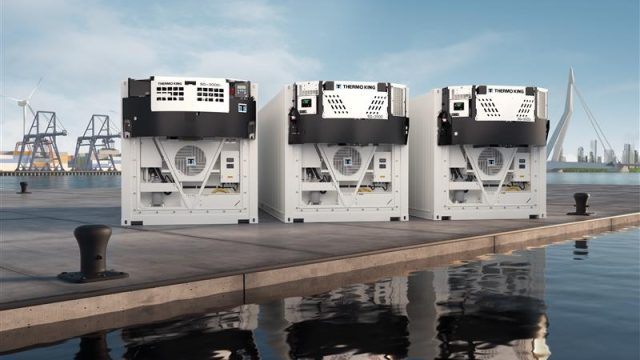The future is colder: pharma cold chain in the age of mRNA vaccines
“It’s plausible that Europe is moving toward a kind of pandemic end game”. So said Hans Kluge, of the World Health Organization’s (WHO), amid suggestions the Omicron variant could infect 60% of Europeans by March 2022 – and result in broad group immunity.

But what of lower income regions? On the face of it, progress here has also been impressive, with GAVI reporting that 1 billion doses have already been distributed by COVAX to 144 countries – with AVAT and COVAX hoping to secure 720 million doses to achieve 60% coverage in Africa by June 2022.
Yet in reality:
- While 67% of the population in richer countries have been vaccinated, in poorer countries the number is closer to 5%
- In June 2021 only 10.4% of people in low-income countries had received at least one dose – and today over 40% of the world’s population has still to do so
- The WHO’s target of vaccinating 40% of the global population by the end of 2021, and 70% by July 2022, currently looks ‘unviable’
All this at a time when vaccine manufacture is close to 1.5 billion doses per month. That’s enough to ensure all targets are met, if equitable distribution is followed. Which is why the WHO has publicly stated: “This is not a supply problem; it’s an allocation problem”.
Reimagining the future
Central to this ‘allocation problem’ is a lack of ultra-low pharma cold chain maturity in lower income regions. It’s a pressing challenge too, considering the fragility of mRNA vaccines – where ultra-cold storage helps to slow down the chemical reactions that can tear them apart.
What’s more, the challenge is only set to get bigger as mRNA vaccines are applied to tackling other diseases – from cancer and flu, to malaria and HIV. It’s a technology that’s revolutionizing the pharmaceutical sector, and ushering in a new era of vaccinology.
Little wonder then that many are predicting the ‘future is colder”. And as key cold chain players like Maersk recognize, the opportunity now exists to reimagine “a pharmaceutical and healthcare supply chain ecosystem for the future”.
An end-to-end pharma cold chain
Inspiring any form of change however is a task steeped in complexity. That’s because most vaccines follow an intricate path from manufacturing plant to patient:
- Specialist cooling containers take them from production to the relevant port of entry – via air, land, or sea
- Once processed (which can take up to two weeks) they’re typically moved to a central medical warehouse (a journey of anything up to a week and beyond)
- After additional quality checks, each load is split into units for transport to specific regions – a process of around five days
- Trucks then move the vaccines to cold stores at district, state, or regional warehouses – adding more days to the overall journey
- Next, these units are further split and sent to individual healthcare facilities – a process that can take anywhere from one to 14 days
- Finally, there is the last mile to local surgeries and vaccination centers, where ultra-cold storage gives way to local refrigerators and cold boxes etc. delivering 2-8°C temperatures – which is where the ‘clock begins to tick’ for immediate use
Existing solutions
Reimagining the pharma cold chain capabilities needed to optimize every stage of this process is therefore a vital step. But it’s important to recognize that such a move doesn’t involve a re-imagination of the technology involved. The pharmaceutical industry can already call upon advance solutions to help protect vaccine efficacy.
Leading the way in this regard are Thermo King Cold Storage Solutions, which provide the full package of refrigeration units and container designed exclusively for vaccine storage – with products that include:
- SuperFreezer: ultra-low temperature container units which go down to -70°C, the only solution that can be used as both stationary and mobile vaccine distribution centers (thus replacing local refrigerators)
- Magnum Plus: a container that offers tight temperature control in ranges from chilled to -40° (in environmental conditions up to +50°C)
- Genset: independent power supply featuring fully electric units with diesel generator – the ideal transit backup
Defining what’s needed
If the future is to be cold, then technology will clearly play a central role. Moving vaccines, maintaining GDP protocols, and demonstrating compliance, are tasks that help shape the qualities by which any equipment is judged. Particularly when deployed to less developed nations where the transport infrastructure alone presents unique challenges.
What are these values to judge by? Well, we’d suggest the following four as being critical:
- Flexibility: maintaining the ability to scale containers up and down, while also putting them to work in multiple scenarios
- Capacity: UNICEF Supply Division estimates that an average country requires 15,000 – 35,000 liters of cold storage to target 20% of their population. A 10ft Ultra-cold storage like SuperFreezer holds 9,700 liters fully loaded (or approximately 5,000 liters if allowing a walk way and stacking height)
- Reliability: delivering the highest possible cooling capacity alongside equipment designed to operate in even the harshest of conditions
- Transparency: provided by real-time remote monitoring to confirm temperature audit trails for every vaccine
- Adaptability: utilize easily stackable and durable ISO containers ranging in sizes from 10ft-20ft to scale capacity in line with demand
Proven technology
Thermo King has worked closely with the pharmaceutical industry and world health bodies to support the Covid-19 vaccine roll-out. We’re confident that our end-to-end cold chain capabilities can help deliver true vaccine equity today – to any location.
You can find out more about our Cold Storage Solutions here.
Other relevant articles that might interest you

Marine
The future of food is fish.
With fish consumption expected to increase by 80% in the next two decades, we explain the key …

Marine
Sustainable Shipping and Energy Efficiency by Thermo King at Intermodal Europe 2025 in Barcelona.
Thermo King®, a leader in transport temperature control solutions and a brand of Trane Technologies, is …

